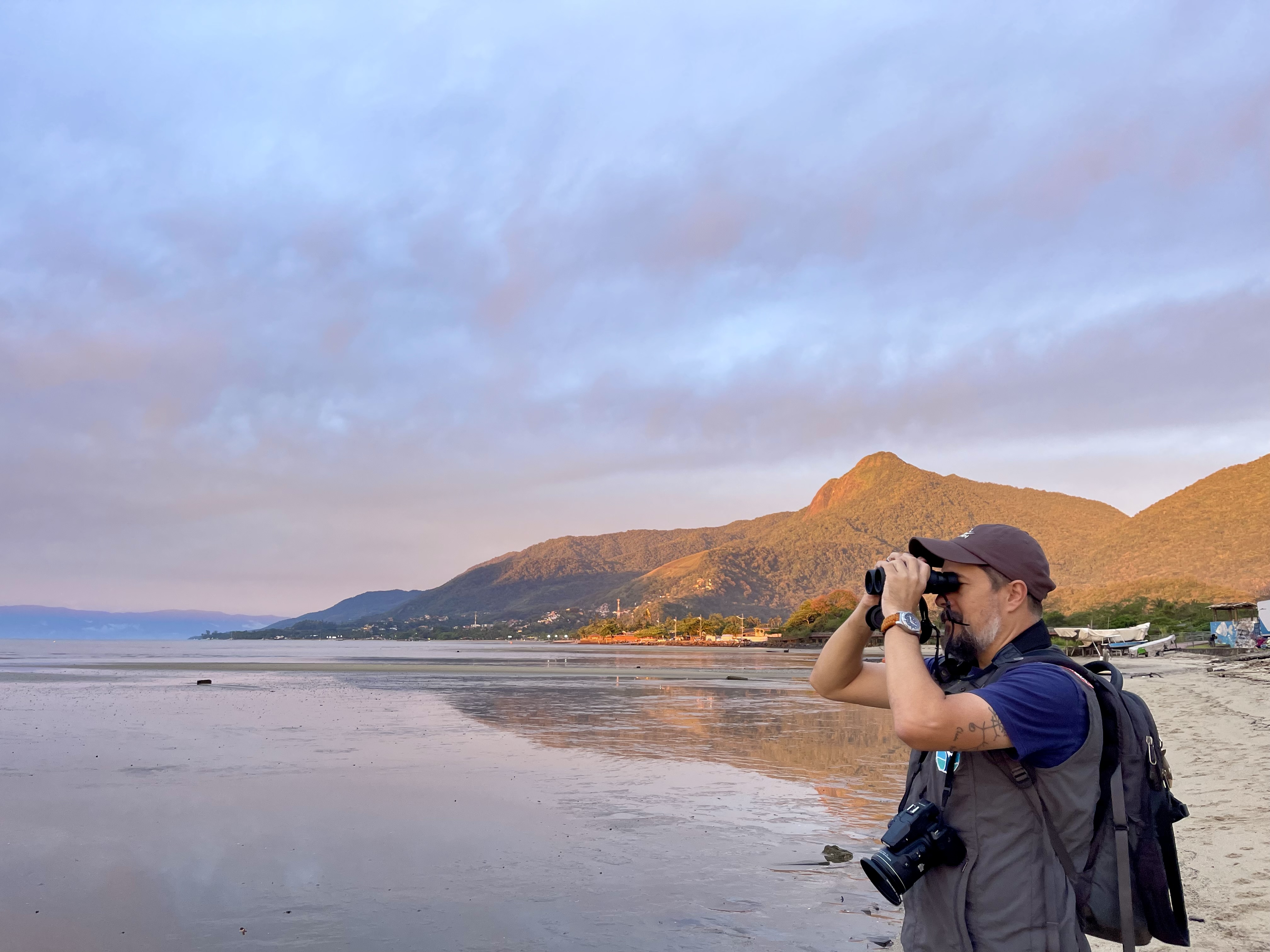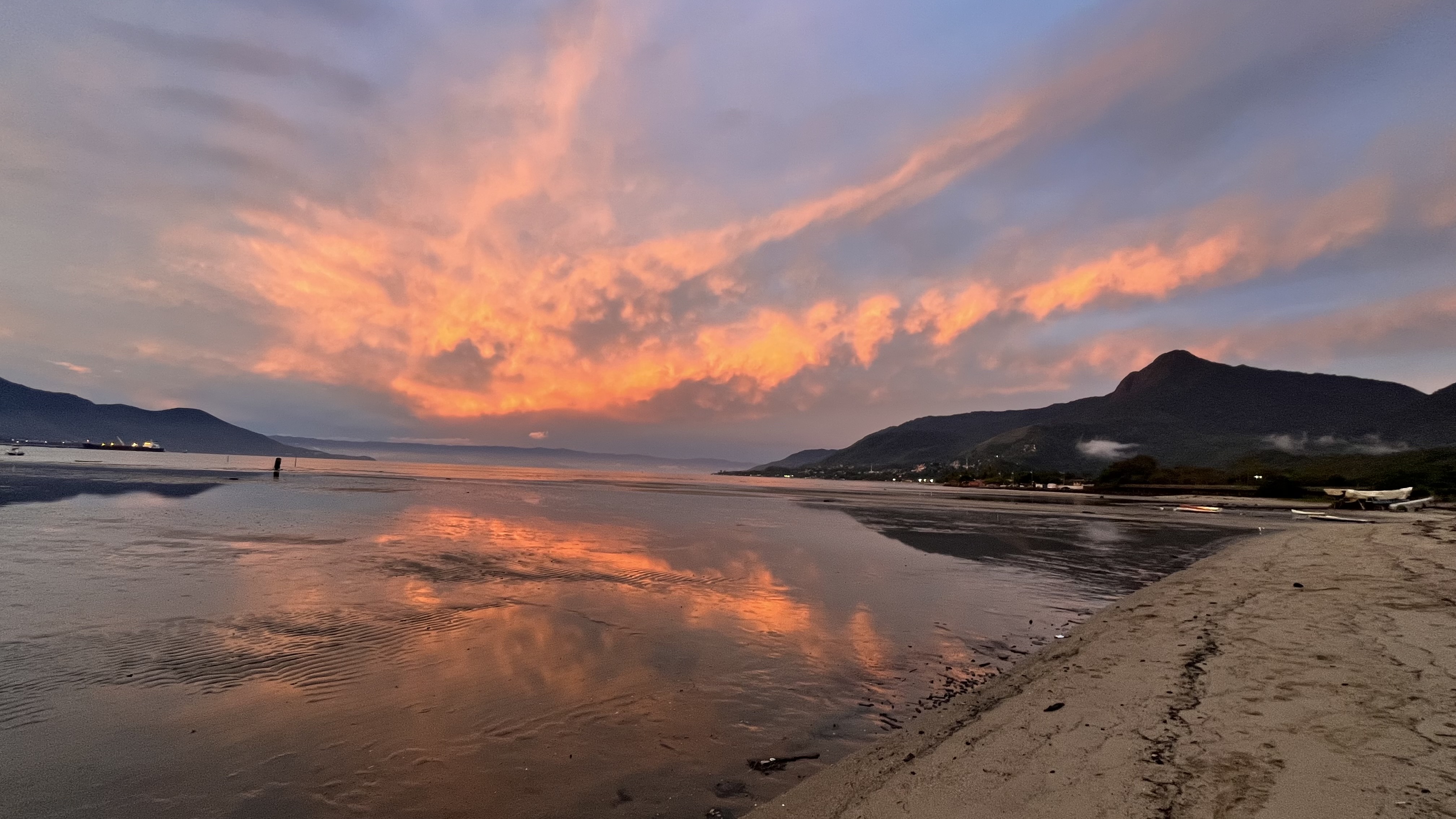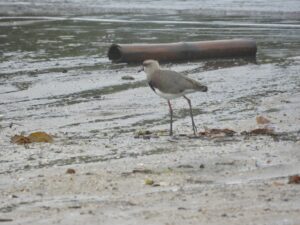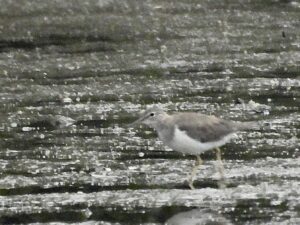VIVAves participa da Contagem Mundial de Aves Limícolas
No primeiro final de semana de novembro, o VIVA Instituto Verde Azul se uniu a observadores de aves de todo o mundo no Wader Conservation World Watch (WCWW12) — um evento global organizado pela Wader Quest (Reino Unido) e coordenado no Brasil pela Wader Quest Brasil e pelo Projeto Aves Limícolas.

Em Ilhabela, as contagens aconteceram no Estuário da Barra Velha, um dos locais mais importantes do arquipélago para aves costeiras e migratórias. Apesar do tempo chuvoso, foi possível observar e registrar 37 espécies, incluindo três espécies de aves limícolas: quero-quero (Vanellus chilensis), batuíra-de-bando (Charadrius semipalmatus) e maçarico-pintado (Actitis macularius).
- Quero-quero
- Batuíra-de-bando
- Maçarico-pintado
O monitoramento seguiu os períodos de maré baixa, com quatro listas de 15 minutos, incluindo uma contagem noturna. As aves foram observadas principalmente forrageando e se deslocando entre o manguezal, os bancos de areia e a zona entre-marés.
A região enfrenta forte pressão antrópica, devido ao tráfego de balsas, poluição luminosa e presença de cães soltos. Para compreender e proteger a biodiversidade local, o VIVA realiza monitoramentos semanais de aves no estuário desde 2024, contribuindo com o International Shorebird Survey (Protocolo ISS) e apoiando ações de conservação dentro da Área de Proteção Ambiental Marinha do Litoral Norte (APA Marinha do Litoral Norte).
Todos os registros do evento estão disponíveis no eBird e no iNaturalist (projeto SOS Mangue).
Um agradecimento especial à Wader Quest e à Wader Quest Brasil pelo incentivo e por inspirar a comunidade global a agir em defesa das aves limícolas e de seus habitats.

—
During the first weekend of November, the VIVA Instituto Verde Azul joined birdwatchers around the world in the Wader Conservation World Watch (WCWW12) — a global event organized by Wader Quest (UK) and coordinated in Brazil by Wader Quest Brasil and the Projeto Aves Limícolas.
In Ilhabela, the counts took place at the Barra Velha Estuary, one of the most important sites in the archipelago for coastal and migratory birds. Despite the rainy weather, it was possible to observe and record 37 species, including three shorebird species: Southern Lapwing, Semipalmated Plover, and Spotted Sandpiper.
The monitoring followed low-tide periods, with four 15-minute checklists, including one nocturnal count. The birds were mostly seen foraging and moving between the mangrove, sandbanks, and intertidal zones.
The area faces strong human pressure from ferry traffic, artificial lighting, and free-roaming dogs. To help understand and protect local biodiversity, VIVA has been conducting weekly bird monitoring in the estuary since 2024, contributing to the International Shorebird Survey (ISS Protocol) and supporting conservation efforts within the North Coast Marine Environmental Protection Area (APA Marinha do Litoral Norte).
All records from the event are available on eBird and iNaturalist (project SOS Mangue).
A special thanks to Wader Quest and Wader Quest Brasil for inspiring global action in defense of shorebirds and their habitats.



